Abstract
A behavioral reconceptualization of cognitive therapy is presented to illustrate that clinical behavior analysis (CBA) has much to offer traditional cognitive behavior therapy. Particular attention is given to the distinction between cognitive structures and products and the theoretical dilemma facing cognitive therapists when they attempt to devise interventions aimed at changing nonbehavioral entities. The distinction between rule-governed and contingency-shaped behavior and the implications of functional analytic psychotherapy (Kohlenberg & Tsai, 1991) are used to resolve the dilemma and to suggest methods for enhancing cognitive therapy. In a case study, a CBA-enhanced version of cognitive therapy was introduced after 7 weeks of standard cognitive treatment for a 35-year-old depressed male. The client—therapist relationship provided opportunities during the therapy session for learning new behavior called for in the behaviorally reconceptualized cognitive therapy. The enhanced treatment improved clinical efficacy and increased the client's focus on his deficits in interpersonal repertoires. Because the present case study involved only one of several enhancements suggested by CBA, the possibility of increased efficacy from a more comprehensive application is discussed.
Keywords: clinical behavior analysis, cognitive therapy, case study, depression, functional analytic psychotherapy, radical behaviorism, behavior therapy
Full text
PDF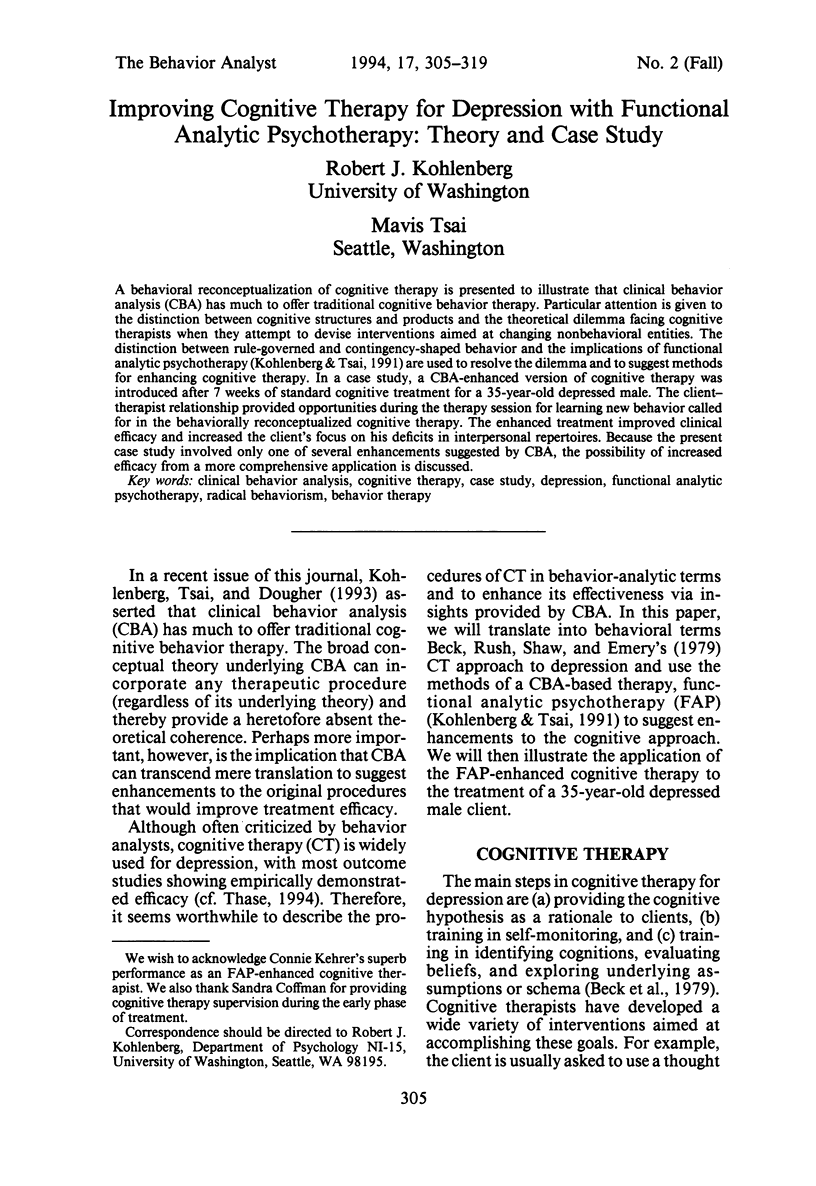
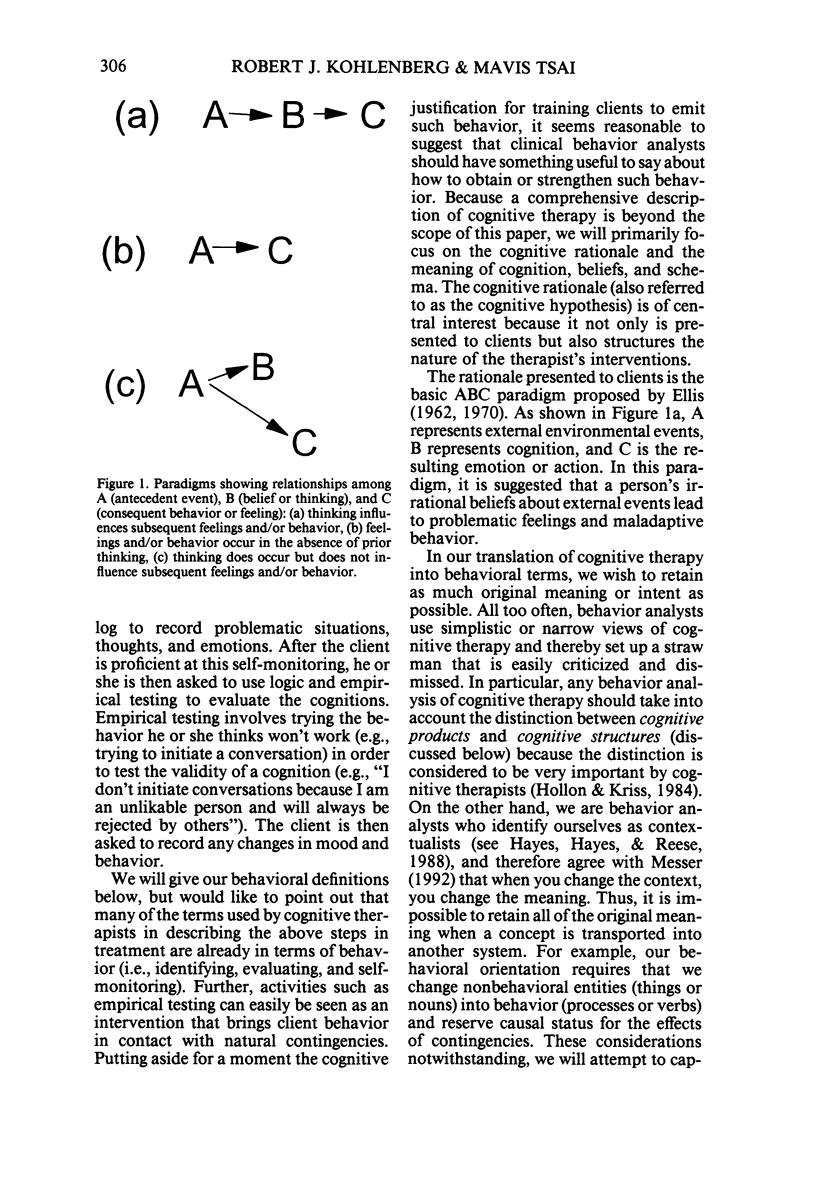
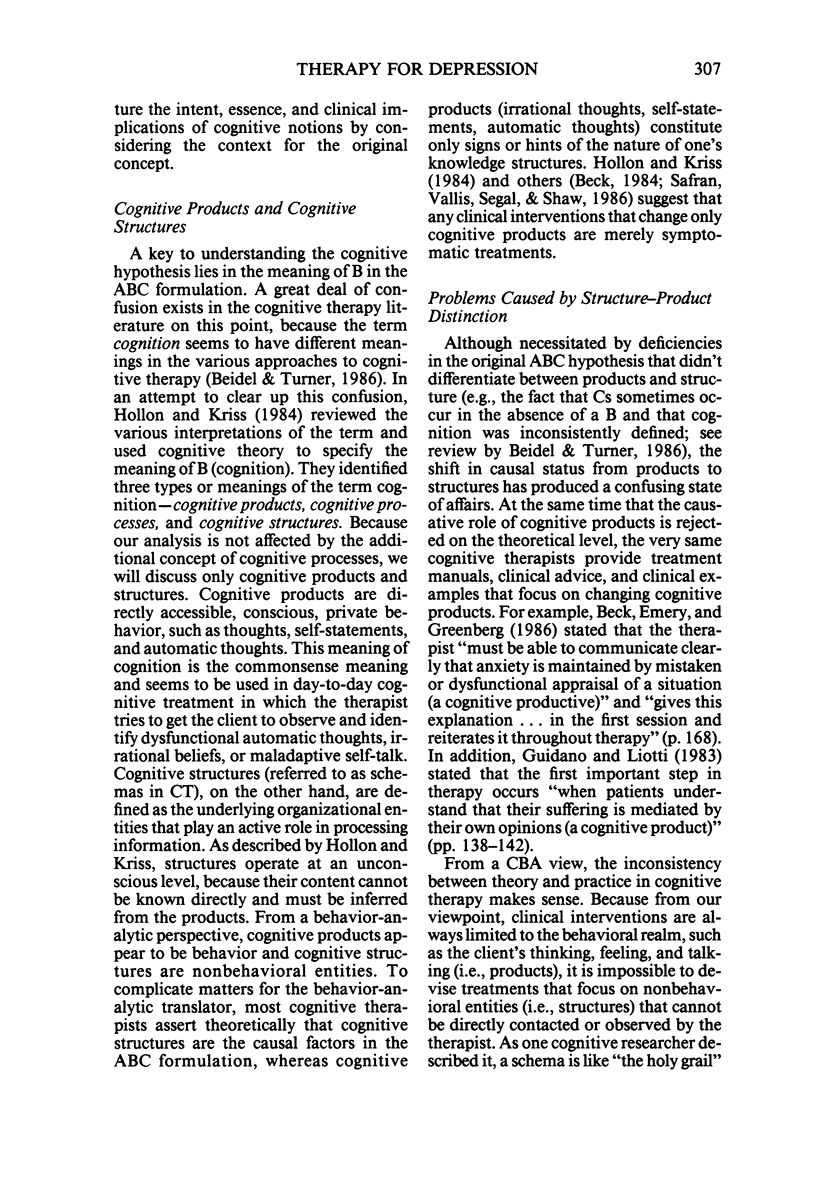
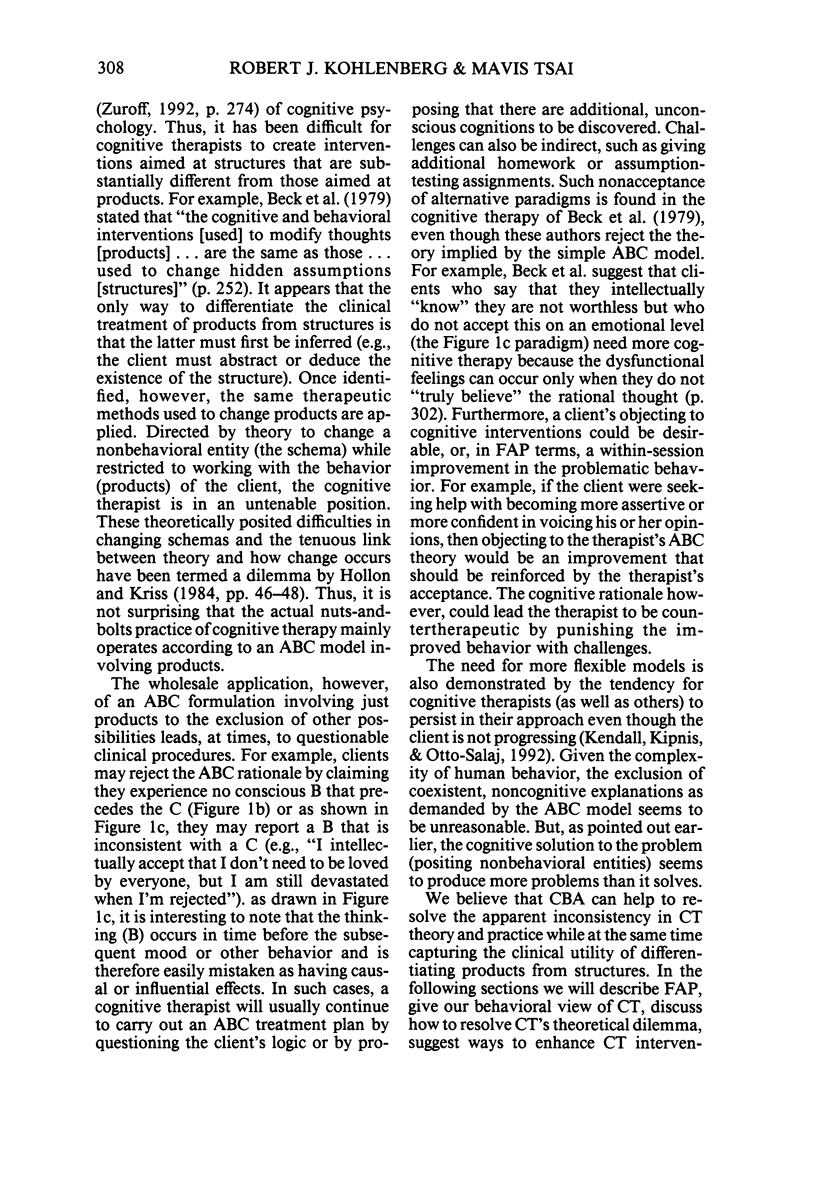
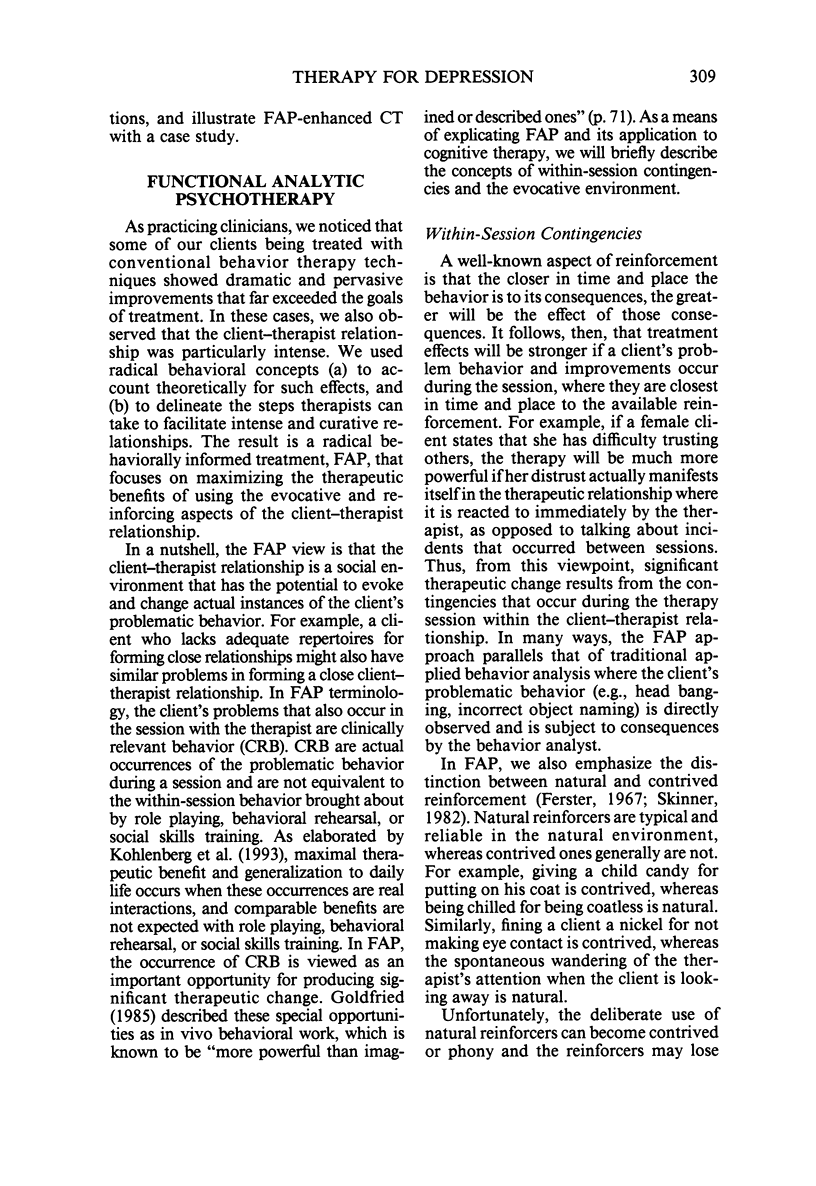
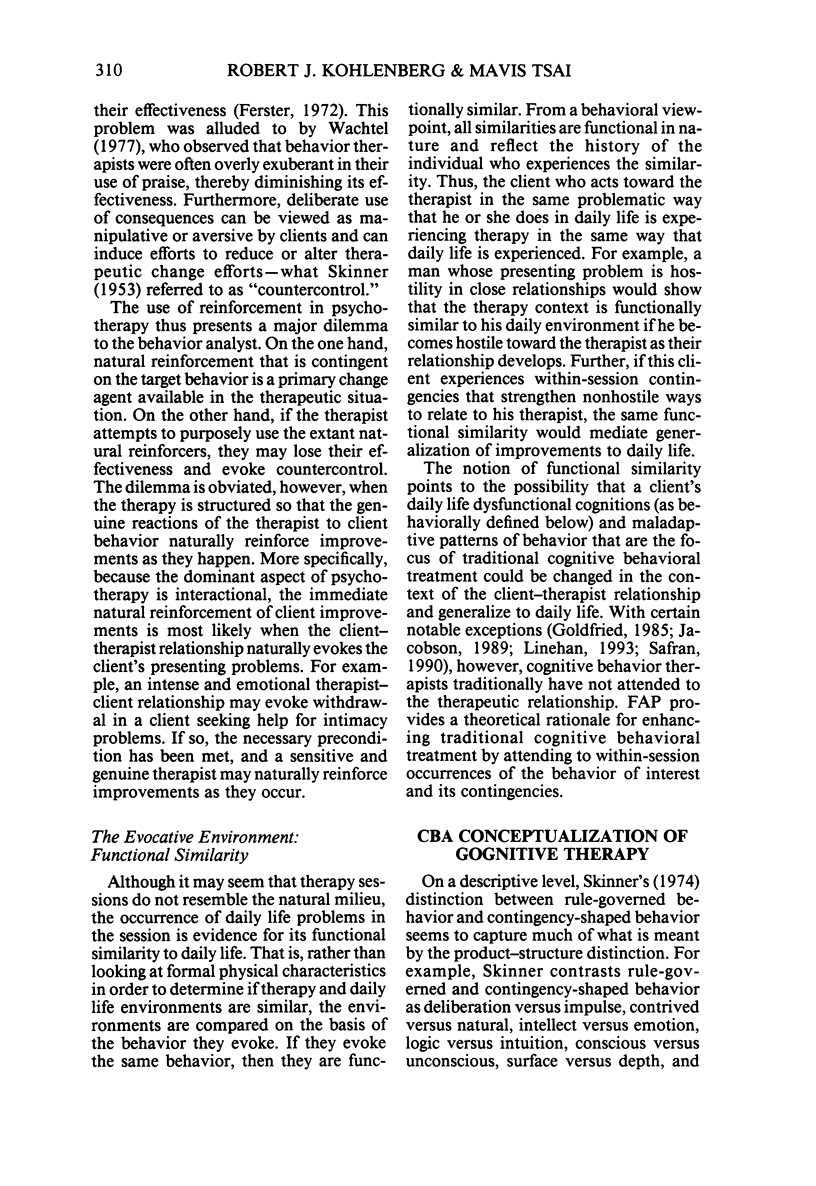
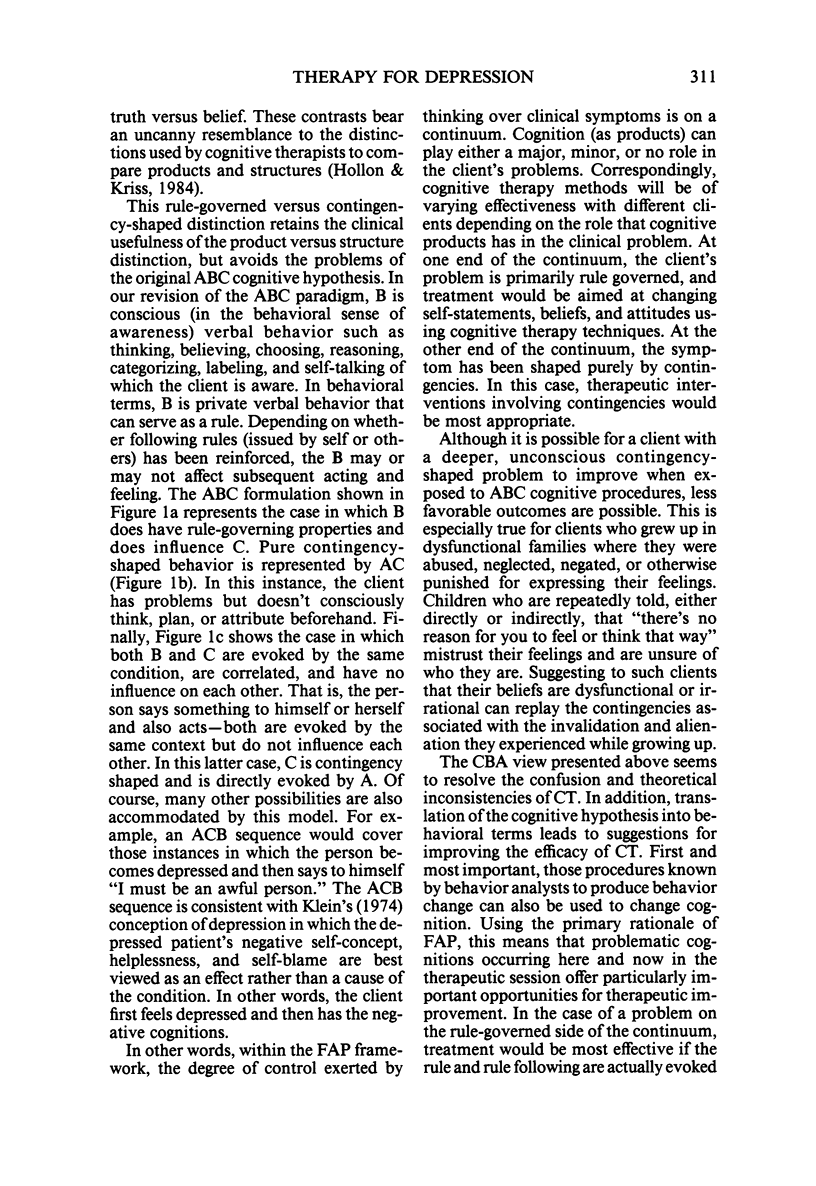
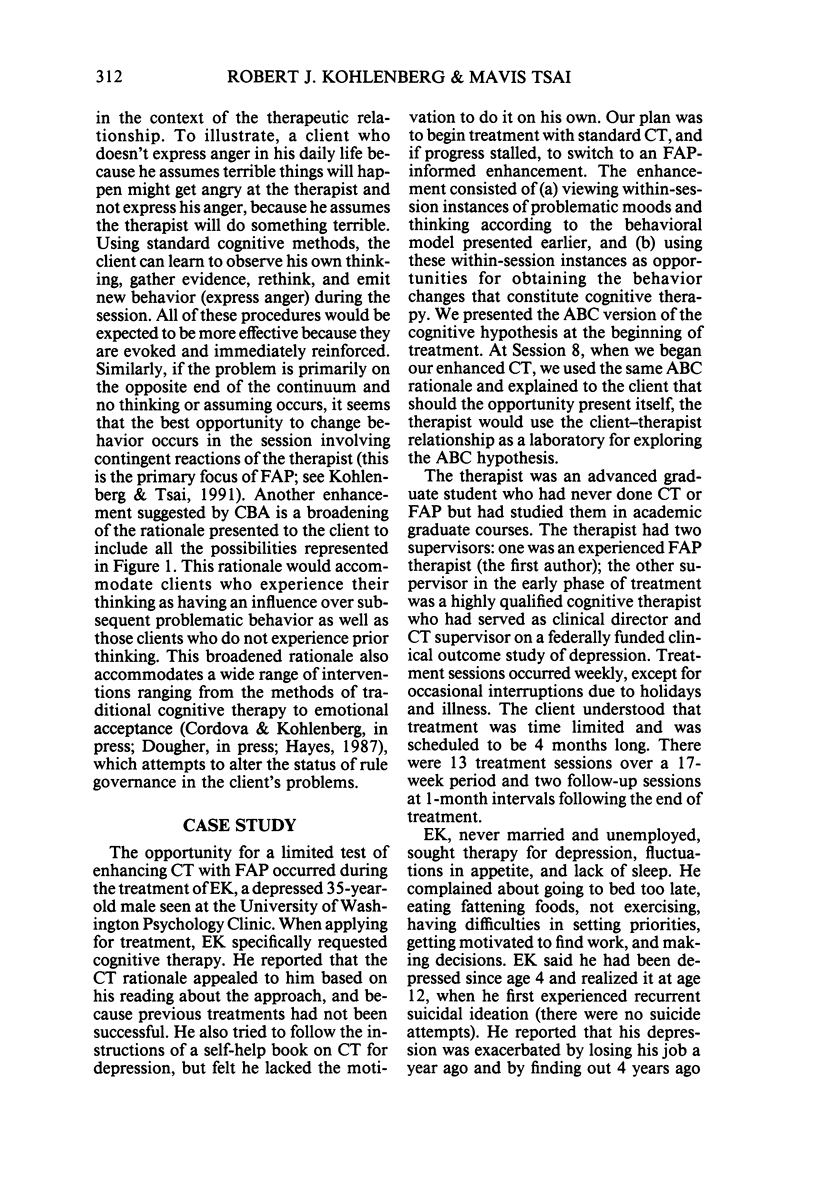
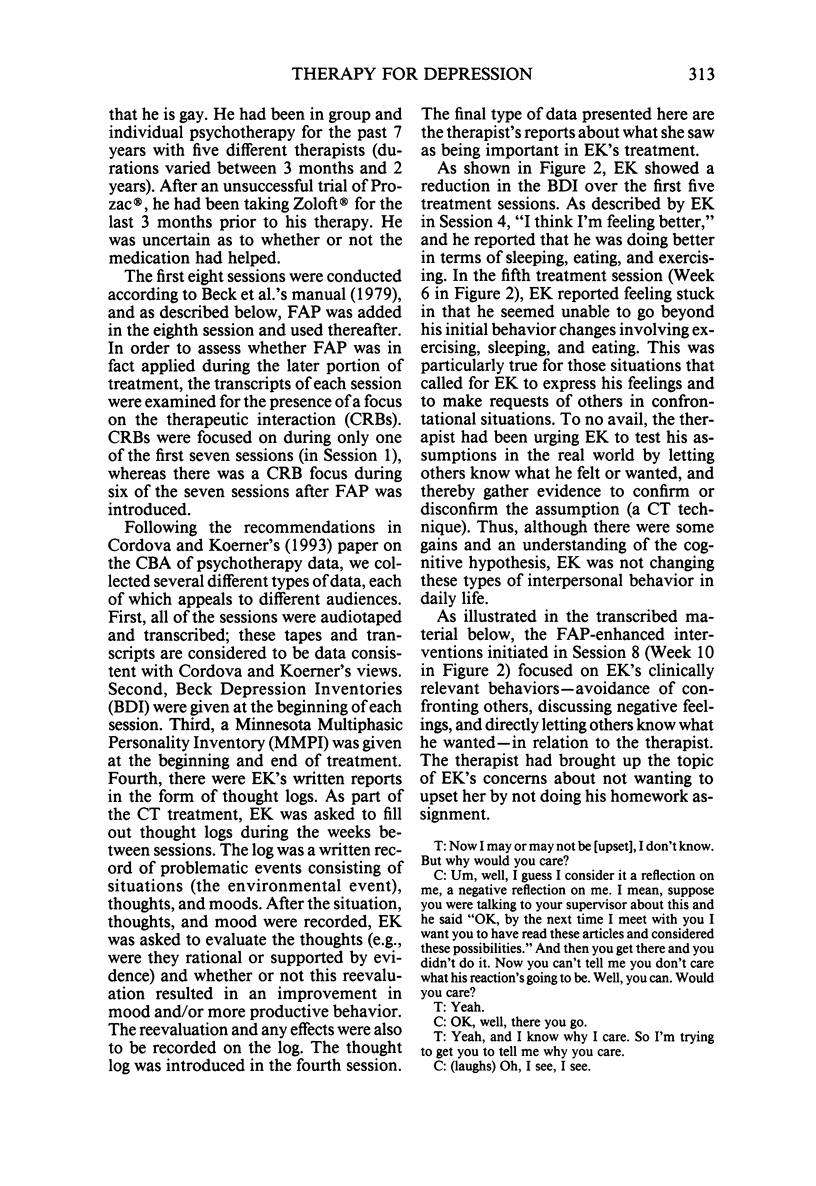
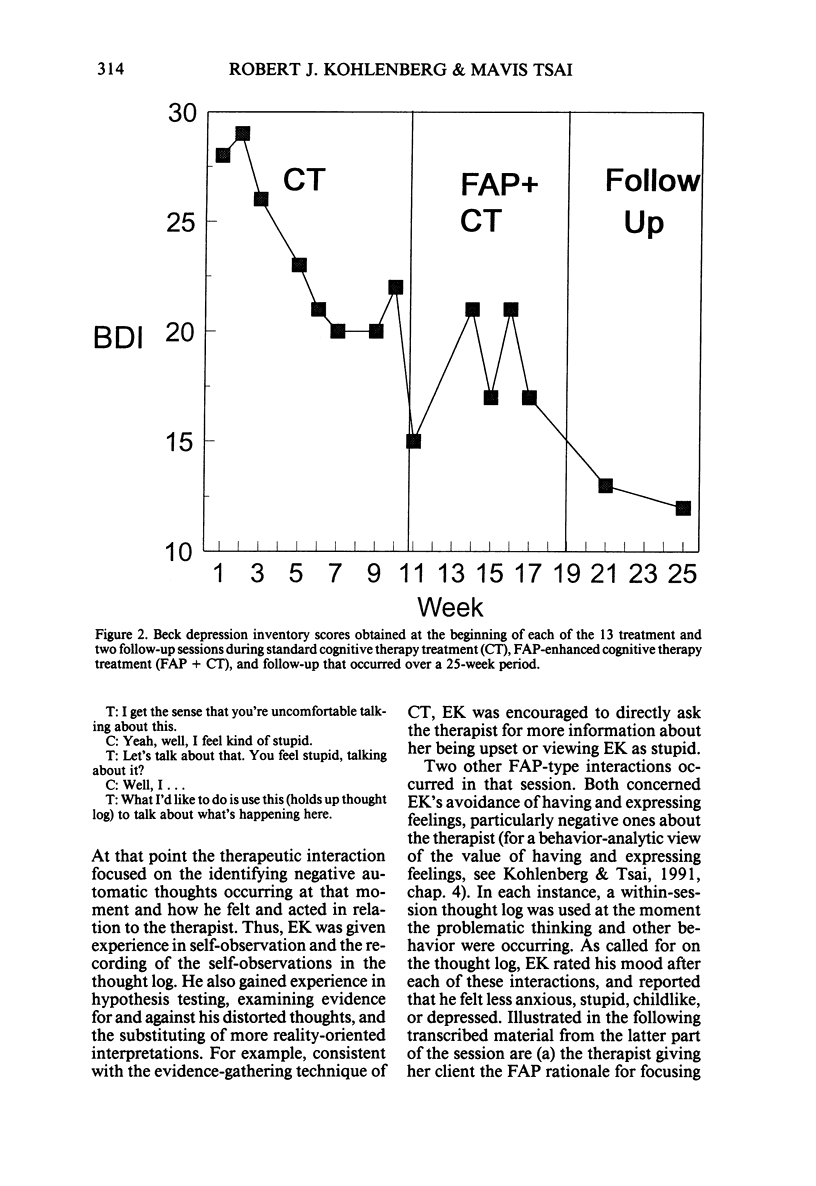
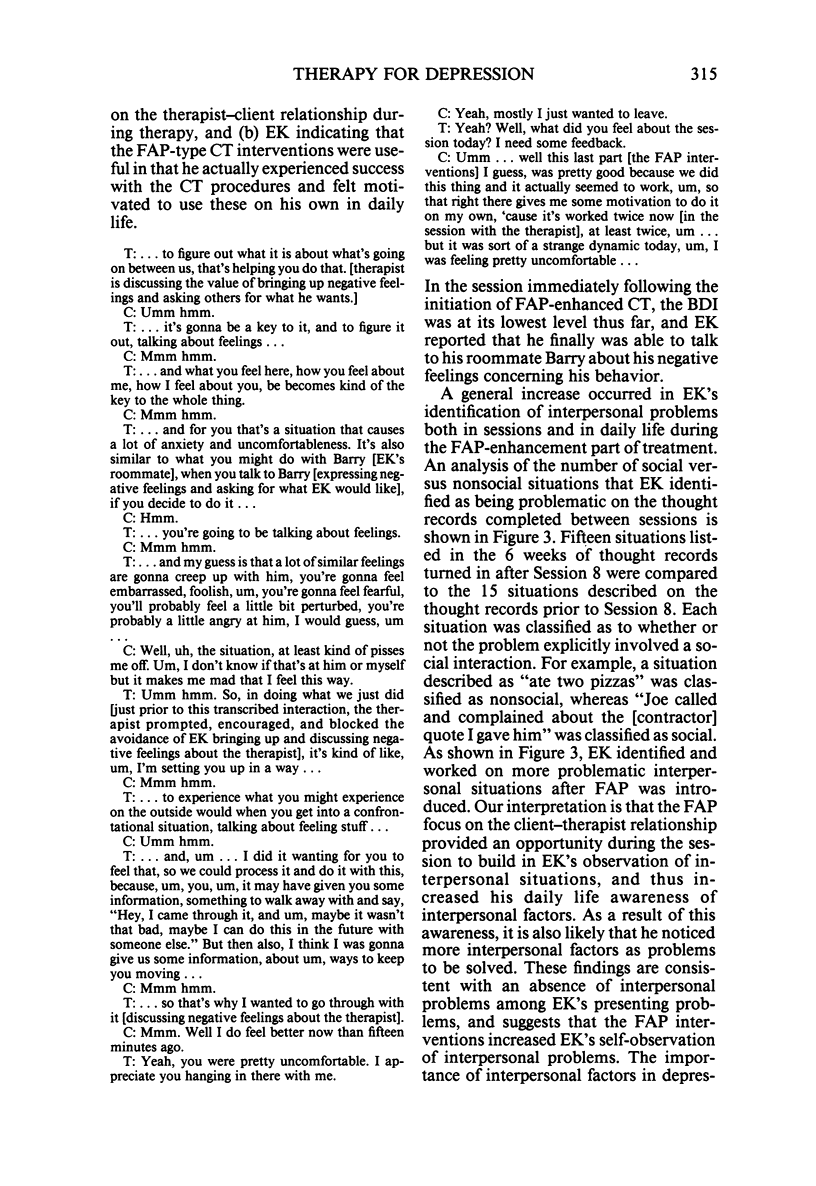
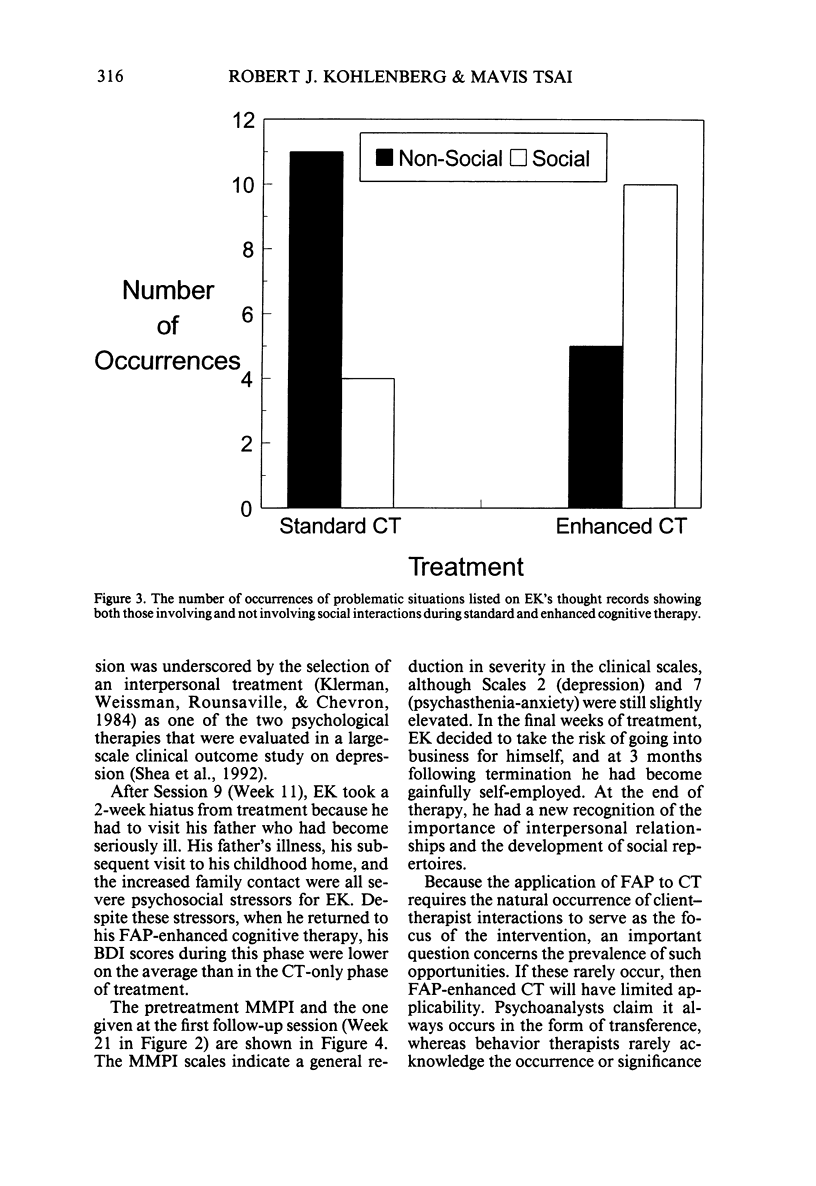
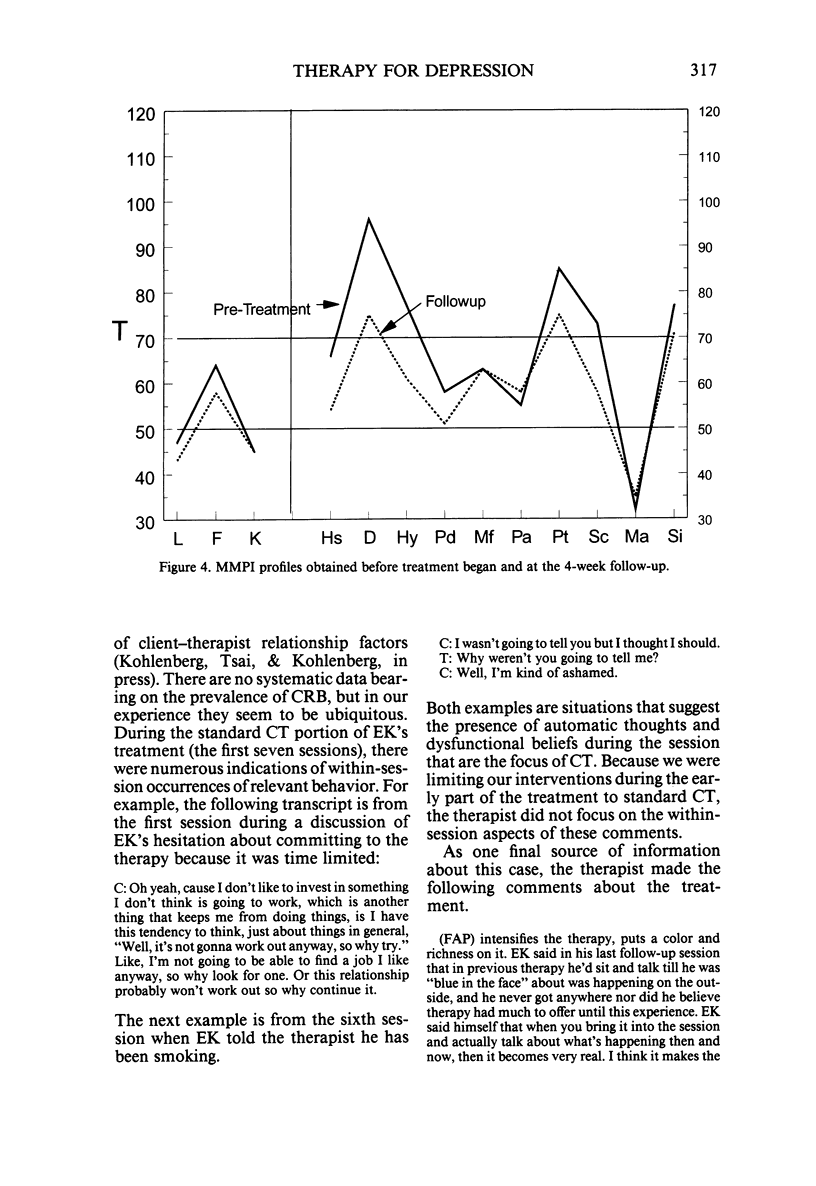
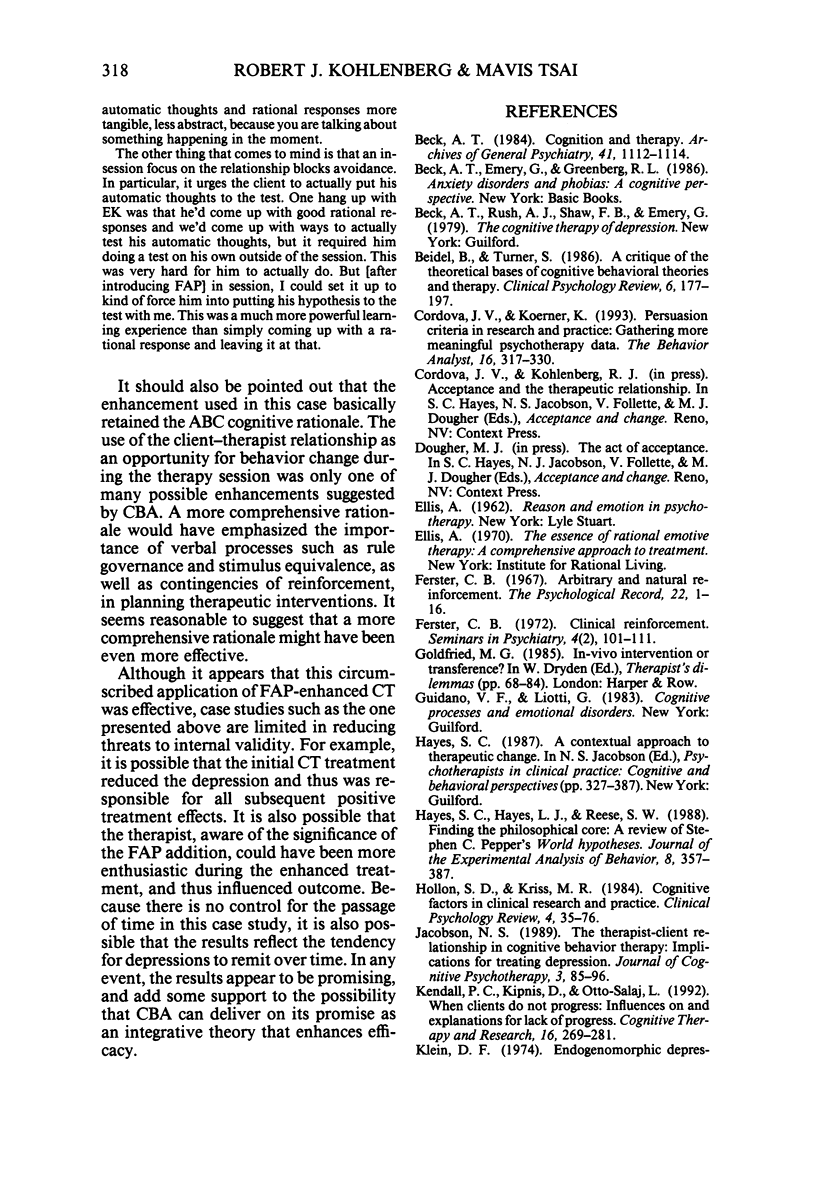
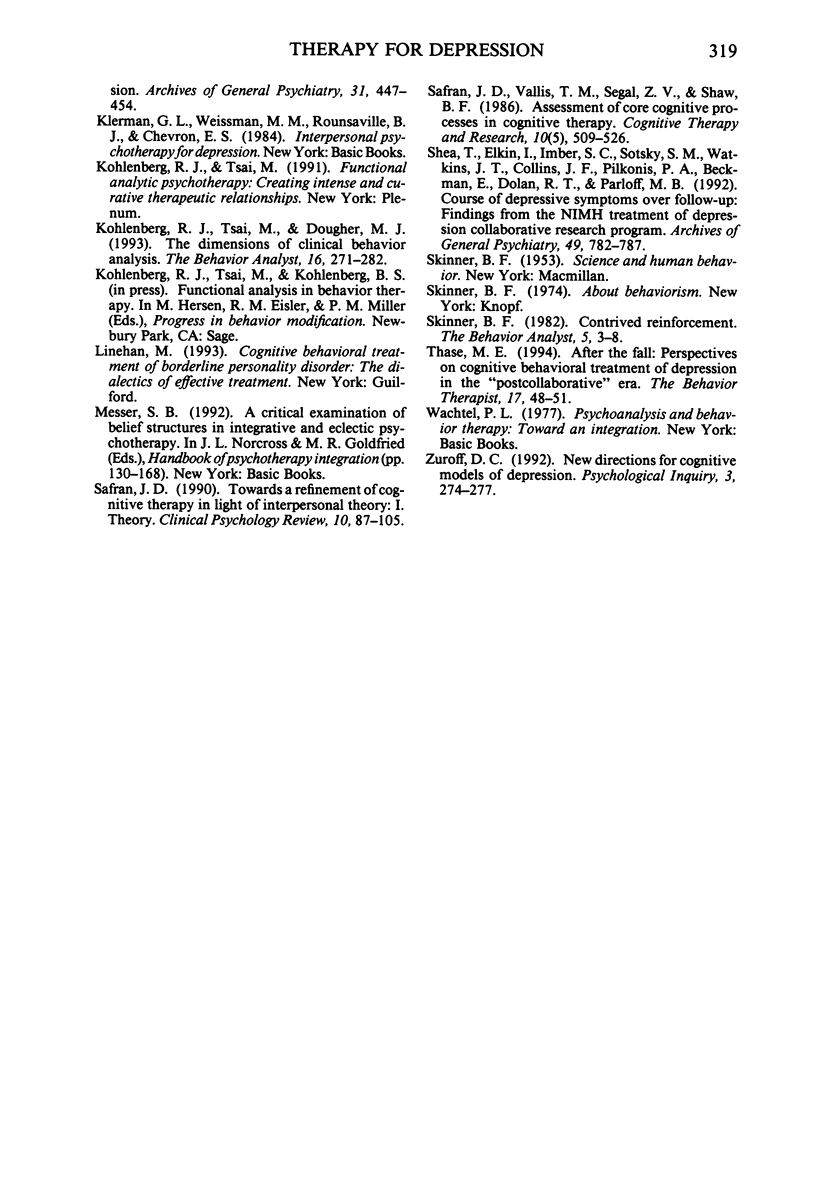
Selected References
These references are in PubMed. This may not be the complete list of references from this article.
- Beck A. T. Cognition and therapy. Arch Gen Psychiatry. 1984 Nov;41(11):1112–1115. doi: 10.1001/archpsyc.1983.01790220102020. [DOI] [PubMed] [Google Scholar]
- Cordova J. V., Koerner K. Persuasion criteria in research and practice: Gathering more meaningful psychotherapy data. Behav Anal. 1993 Fall;16(2):317–330. doi: 10.1007/BF03392639. [DOI] [PMC free article] [PubMed] [Google Scholar]
- Klein D. F. Endogenomorphic depression. A conceptual and terminological revision. Arch Gen Psychiatry. 1974 Oct;31(4):447–454. doi: 10.1001/archpsyc.1974.01760160005001. [DOI] [PubMed] [Google Scholar]
- Kohlenberg R. J., Tsai M., Dougher M. J. The dimensions of clinical behavior analysis. Behav Anal. 1993 Fall;16(2):271–282. doi: 10.1007/BF03392636. [DOI] [PMC free article] [PubMed] [Google Scholar]
- Shea M. T., Elkin I., Imber S. D., Sotsky S. M., Watkins J. T., Collins J. F., Pilkonis P. A., Beckham E., Glass D. R., Dolan R. T. Course of depressive symptoms over follow-up. Findings from the National Institute of Mental Health Treatment of Depression Collaborative Research Program. Arch Gen Psychiatry. 1992 Oct;49(10):782–787. doi: 10.1001/archpsyc.1992.01820100026006. [DOI] [PubMed] [Google Scholar]
- Skinner B. F. Contrived reinforcement. Behav Anal. 1982 Spring;5(1):3–8. doi: 10.1007/BF03393135. [DOI] [PMC free article] [PubMed] [Google Scholar]


